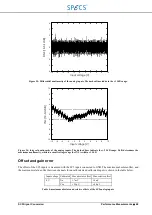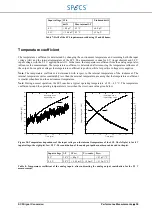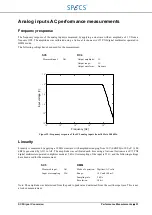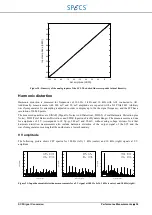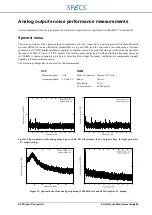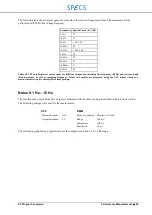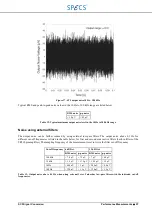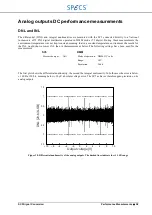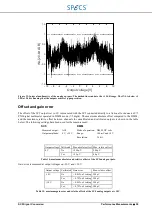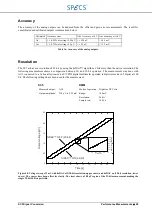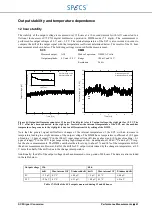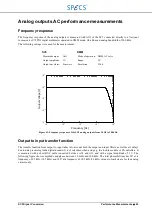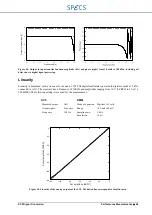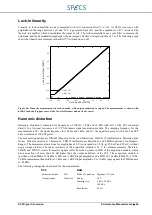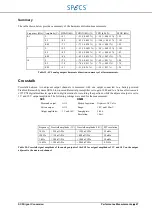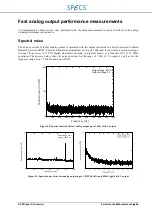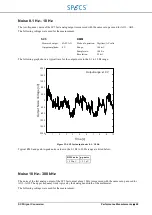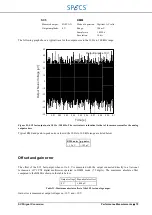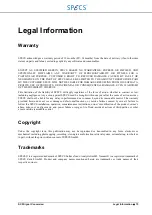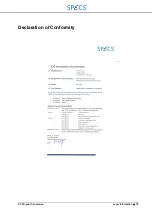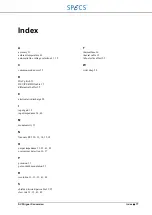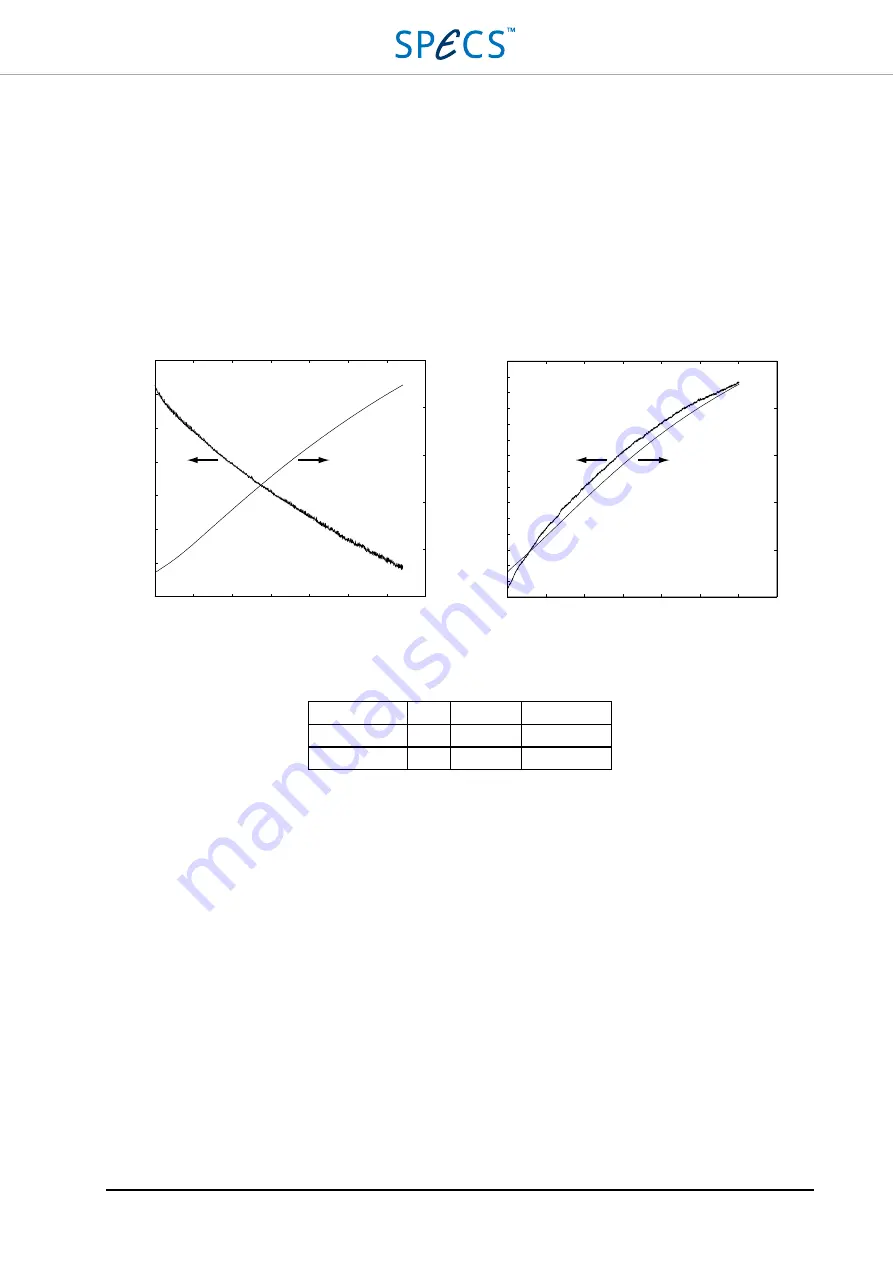
SC5 Signal Conversion
Performance Measurements
•
62
Temperature coefficient
The temperature coefficient is determined by changing the environment temperature and recording both the output
voltage (AO1) and the internal temperature of the SC5. The measurement is performed for 0 V and 9.9 V output. For
negative voltages the temperature coefficient is negative, while for positive voltages it is positive.
Note:
The temperature coefficient is determined with respect to the internal temperature of the instrument. The
internal temperature varies considerably less than the external temperature, meaning that the temperature coefficient
is smaller when based on the environment temperature.
Note:
During normal operation, the SC5 reaches a typical operating temperature of 38 – 42 °C. The temperature
coefficient around the operating temperature is lower than the worst-case value given below.
Figure 42: Temperature dependence of the output voltage on the internal temperature of the SC5. The left plot is for 0 V
output voltage, the right plot for +9.9 V.
Output voltage
Δ
T
Δ
V
Tc
0 V
20 °C < -55 µV < -2.75 µV/°C
9.9 V
20 °C < 1.42 mV < 71 µV/°C
Table 18: Temperature coefficient of the analog outputs.
0
5
10
15
20
25
30
35
0
5
10
15
20
25
30
35
Time [min]
O
ut
pu
tv
ol
ta
ge
[
μ
V]
In
te
rn
al
te
m
pe
ra
tu
re
[°
C
]
-180
-190
-200
-210
-220
-230
-240
-250
35
30
25
20
15
10
In
te
rn
al
te
m
pe
ra
tu
re
[°
C
]
35
30
25
20
15
10
Time [min]
O
ut
pu
tv
ol
ta
ge
[m
V
-9
.9
V
]
6.5
6.4
6.3
6.2
6.1
6.0
5.9
5.8
5.7
5.6
5.5
5.4
5.3
5.2
5.1
5.0
Output range: ±10 V
Output voltage: +9.9 V
Output range: ±10 V
Output voltage: 0 V
Summary of Contents for Nanonis SC5
Page 1: ...Signal Conversion SC5 User Manual November 2016 R6860...
Page 2: ......
Page 5: ...SC5 Signal Conversion Conventions 5...
Page 8: ......
Page 72: ......
Page 74: ......
Page 75: ...SC5 Signal Conversion Legal Information 75 Declaration of Conformity...

